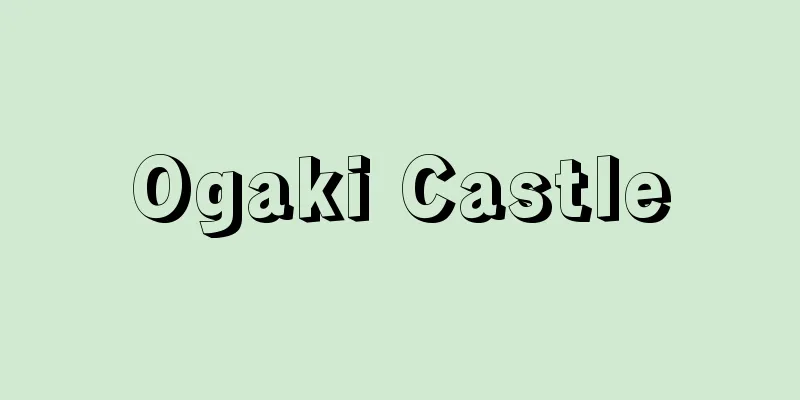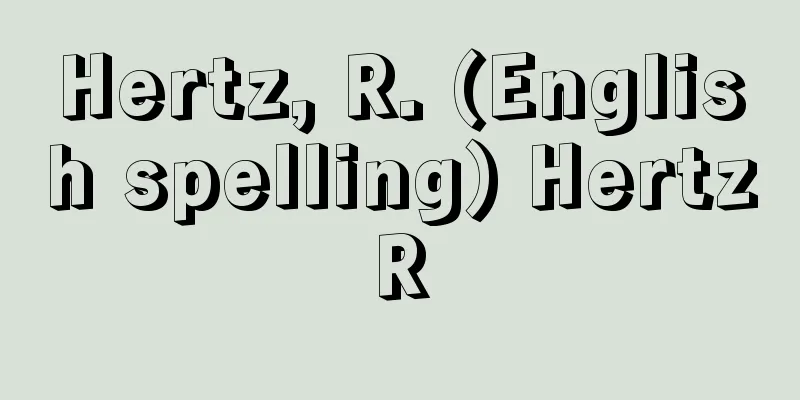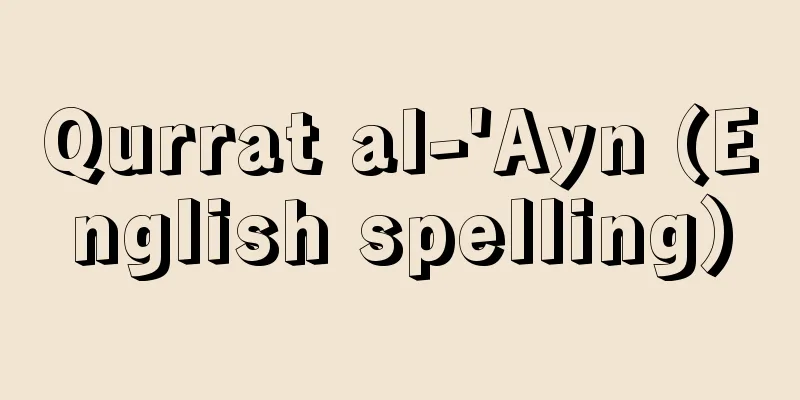Ogaki Castle

|
Hirajiro was a flat castle located in Ogaki City, Gifu Prefecture. Located in the center of Ogaki City today, it is known as the castle where the Western Army (Toyotomi side) placed their headquarters during the Battle of Sekigahara in 1600 (Keicho 5), and was the location of the Ogaki Domain's administrative office during the Edo period. It is said to have been built by local lord Takekoshi Naotsuna in 1500 (Meio 9), or by Miyagawa Yasusada (Yasudare) in 1535 (Tenbun 4), but the date of construction and the person who built it are unknown. In its early days, Ogaki Castle covered the current Honmaru and Ninomaru areas, but Ujiie Naomoto carried out a large-scale expansion of the castle in 1563 (Eiroku 6). When Ikeda Tsuneoki became the lord of the castle in 1583 (Tensho 11), full-scale construction of the castle began. Ito Sukemori, who became the lord of the castle in 1596 (Keicho 1), built a castle tower, and after subsequent renovations, an elegant four-tiered, four-storey castle tower was completed. During this time, the Battle of Sekigahara occurred in 1600 (Keicho 5). In this battle, the lord of the castle, Ito Morimune, belonged to the Western Army, so the main force of the Western Army led by Ishida Mitsunari used this castle as a base and marched to Sekigahara. After the Eastern Army (Tokugawa side) won the field battle at Sekigahara, they laid siege to Ogaki Castle. At this time, the castle commander, Fukuhara Naotaka (Mitsunari's brother-in-law), accepted the Eastern Army's recommendation to surrender and opened the castle. After this battle, Tokugawa Ieyasu appointed Ishikawa Yasumichi, a fudai daimyo, as the lord of the castle. After that, the castle passed through the Ishikawa clan, Hisamatsu Matsudaira clan, Okabe clan, and others, and in 1633 (Kan'ei 10), Toda Ujikane entered the castle as the lord of Ogaki Domain with 100,000 koku of rice. The Toda clan served as the lord of the castle for 11 generations until the Meiji Restoration. The castle was abandoned due to the castle abolition order in 1873 (Meiji 6), but some of the buildings, including the castle tower, were not demolished and were designated a national treasure in 1936 (Showa 11). However, it was burned down in an air raid in 1945 (Showa 20). The exterior of the castle tower was restored in 1959 (Showa 34) and the Inui Tower in 1967 ( Showa 42) using reinforced concrete, and the East Gate, Tamon Tower, and Kon Tower were also restored later and remain to this day. Inside the restored castle tower is a museum and exhibition hall with themes such as the Battle of Sekigahara. Currently, the area around the former Honmaru and Ninomaru is maintained as Ogaki Park. These restored structures are located within the park. In the past, Ogaki Castle was surrounded by multiple water moats, but most of the moats have been filled in, and only small parts remain within the park, as well as the remains of the stone walls of the main citadel. In addition, the Honmaru Inui Gate is located in a private home in the city, a castle gate (it is not clear which gate it was) is located in another private home, and the Shimizu Gomon Gate has been relocated to the Tenrikyo Honshinai Branch Church and remains there. It is about a 10-minute walk from Ogaki Station on the JR Tokaido Main Line. ◇It is also called Bijo Castle and Kyorokujo Castle. Source: Kodansha Encyclopedia of Japanese Castles Information |
|
岐阜県大垣市にあった平城(ひらじろ)。現在の大垣市の中心部に位置しており、1600年(慶長5)の関ヶ原の戦いの際には、西軍(豊臣方)が本営を置いた城としても知られ、江戸時代には大垣藩の藩庁が置かれた城である。1500年(明応9)に土豪の竹腰尚綱によって築城されたとも、1535年(天文4)に宮川安貞(安定)が築いたともいわれているが、築城年代、築城者は特定できていない。初期の大垣城は、現在の本丸・二の丸を城域とした城だったが、氏家直元が1563年(永禄6)、城の大規模な拡張を行った。1583年(天正11)に池田恒興が城主になったころから、城郭としての本格的な整備が始まり、1596年(慶長1)に城主となった伊藤祐盛は天守を築き、その後の改修を経て、4重4階の優美な天守閣ができあがった。この間、1600年(慶長5)には関ヶ原の戦いが起こる。この戦いでは、城主の伊藤盛宗が西軍に属したことから、石田三成率いる西軍の主力部隊は、この城を拠点とし、関ヶ原に出撃した。東軍(徳川方)は関ヶ原で行われた野戦で勝利を収めると大垣城を包囲した。このとき、大垣城の城将の福原直高(三成の義弟)は東軍の降伏勧告を受け入れて開城した。この戦いの後、徳川家康は譜代大名の石川康通を城主として入城させた。その後、石川氏、久松松平氏、岡部氏などを経て、1633年(寛永10)に戸田氏鉄が10万石の大垣藩主として入城し、以後明治維新に至るまで、戸田氏が11代にわたって城主を務めた。1873 年(明治6)の廃城令により廃城となったが、天守を含む一部の建物は取り壊されず、1936年(昭和11)には国宝に指定された。しかし、1945年(昭和20)の空襲により焼失。1959年(昭和34)に天守が、1967年(昭和42)には乾櫓(いぬいやぐら)が鉄筋コンクリート造で外観復元され、その後、東門・多聞櫓・艮櫓も復元されて今日に至っている。この復興天守の内部は関ヶ原の戦いなどをテーマにした資料館・展示館となっている。現在、かつての本丸・二の丸一帯が大垣公園として整備されている。こうした復元された建造物は同公園内にある。また、往時の大垣城は幾重にも水堀が巡らされていたが、ほとんどの堀は埋め立てられ、現在、そのごく一部が同公園内に残っているほか、本丸の石垣の遺構が現存する。このほか、同市内の民家に本丸乾門が、別の民家に城門(どこの門だったかは特定されていない)が、天理教本眞愛分教会に清水御門が移築され現存している。JR東海道本線大垣駅から徒歩約10分。◇麋城(びじょう)、巨鹿城(きょろくじょう)ともよばれる。
出典 講談社日本の城がわかる事典について 情報 |
Recommend
ABS resin - ABS copolymer
A synthetic resin made of acrylonitrile (A), buta...
Testoni, A. (English spelling) TestoniA
…From about 1880 he turned to tragedy, but he exc...
involution
...In permafrost zones, the landforms that develo...
Stephanitis takeyai (English spelling)
…[Masaaki Tomokuni]. . … *Some of the terminology...
Kaikai Shokudo - Kaikai Shokudo
...Also, Muslim cuisine, Qingzhen Cai, is an inde...
Brown spider shell - Brown spider shell
…However, if you put the calcareous shells in vin...
Epiphany - Kougensai (English spelling) Epiphany
Along with Easter and Pentecost, Epiphany is one o...
Argenteuil (food) (English spelling) Argenteuil
...There is also the traditional method of adding...
Wilson, JT
...This cycle applies not only to the past 200 mi...
"The Tale of the Unfolding Shock and Violent Night" - The Tale of the Unfolding Shock and Violent Night
...It seems to have been written by many authors,...
Ibaratomiyo - Ibaratomiyo
...There are several species of the Three-spined ...
Akagi (Akagi) - Bischofia javanica
A large tree of the Euphorbiaceae family native to...
Ise Ondo
A folk song from Ise City, Mie Prefecture. This i...
Ezo Management - Ezo Management
...The prisoners of war, the successor to the Emi...
Nun of Castro
...After a long period of misfortune, he became c...









